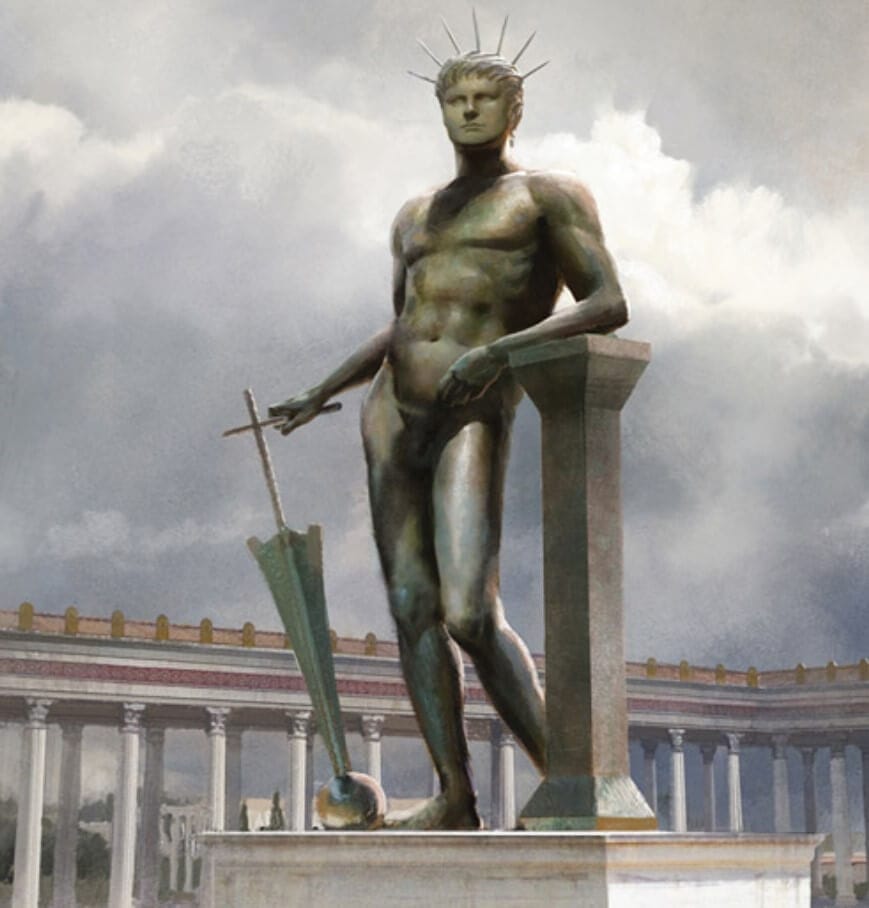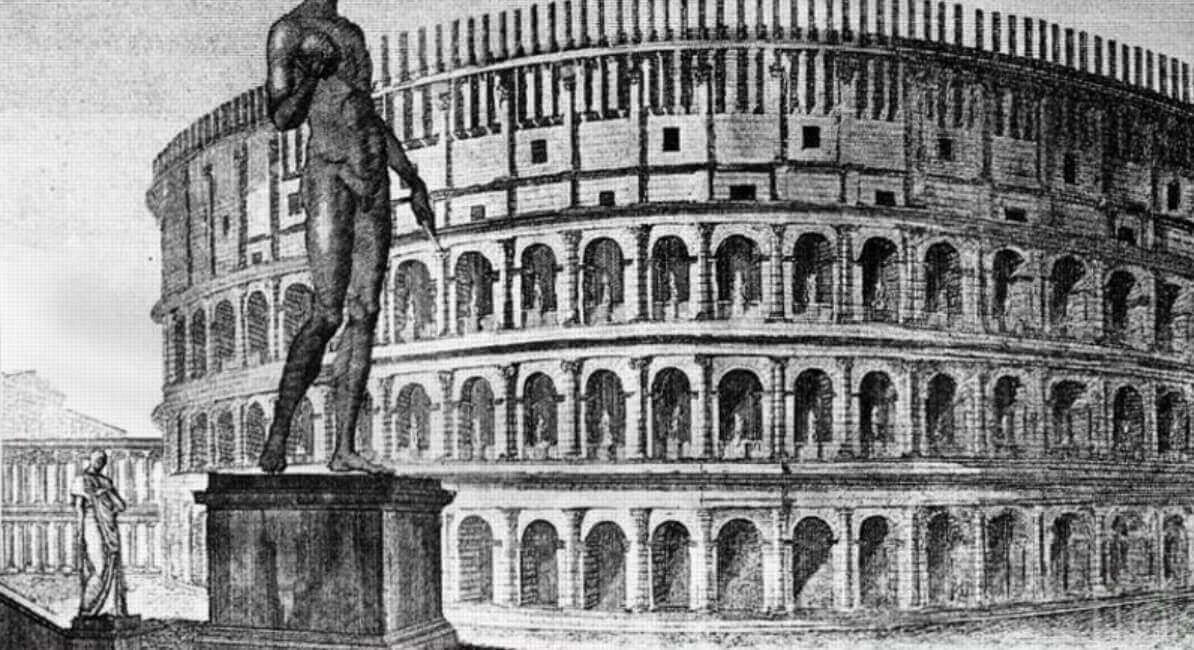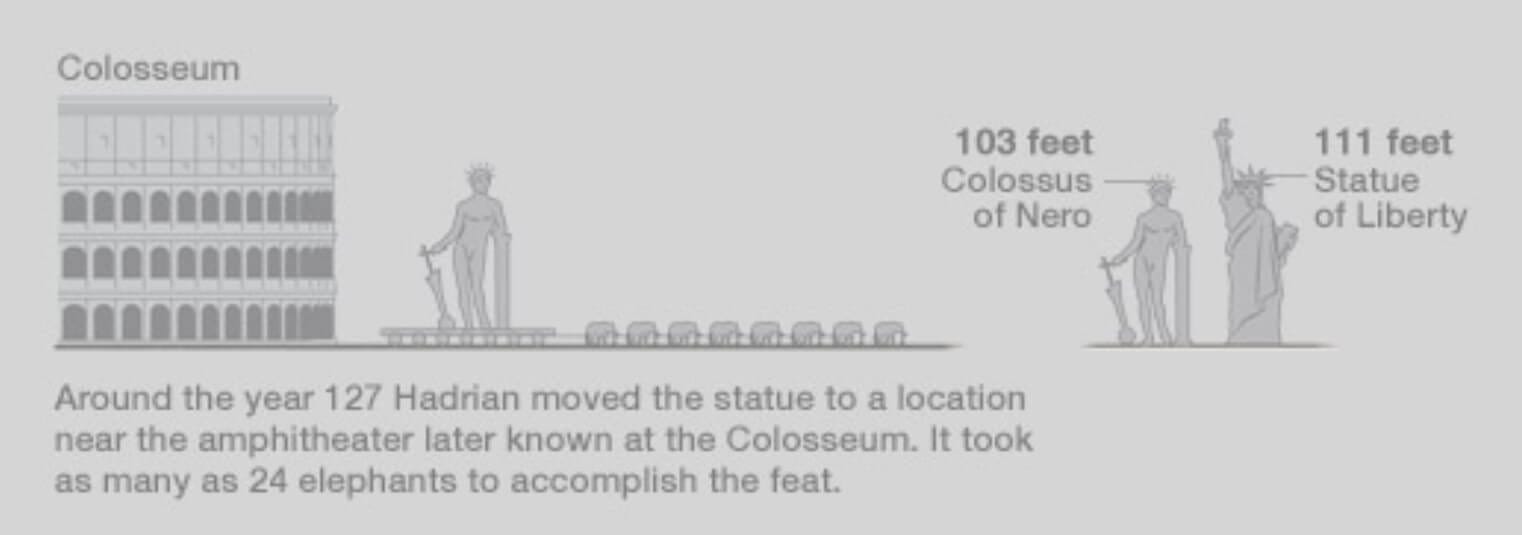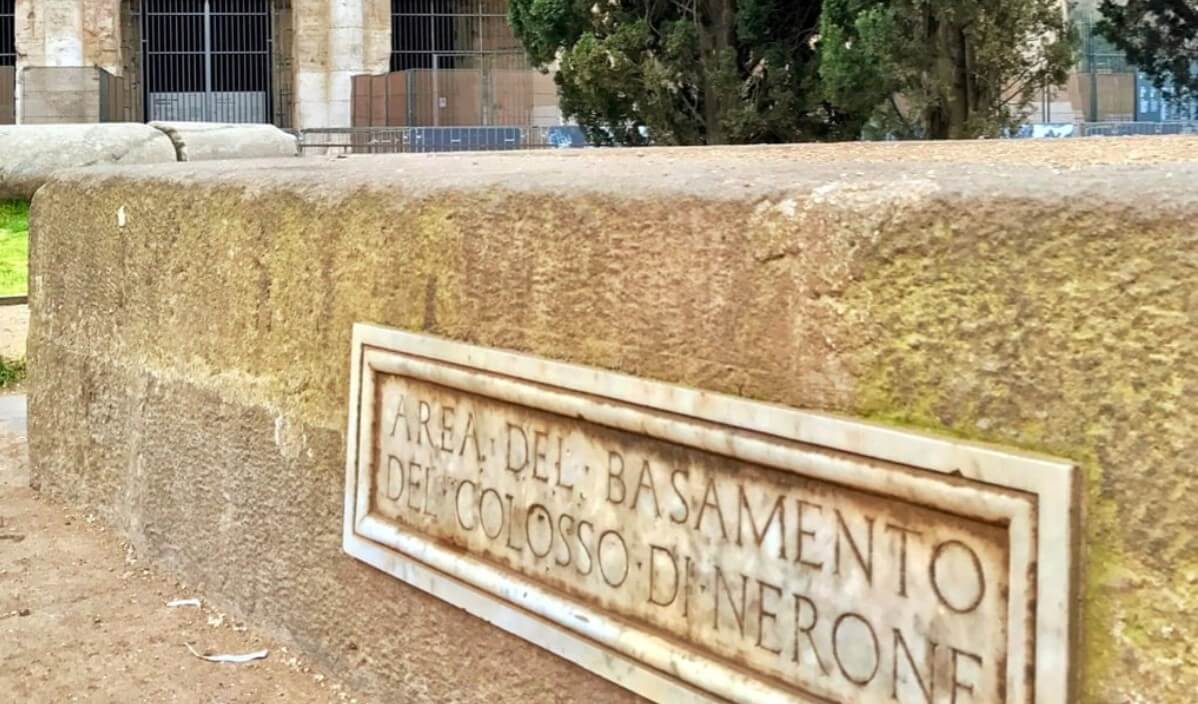
- In Colosseum
The Colossus of Nero Today & Nero’s Statue Colosseum History Facts
A few meters from the entrance to the Flavian Amphitheatre (the Colosseum), there lies a marble inscription that marks the spot where the gigantic Colossus of Nero once stood.
One of the most legendary pieces of Roman architecture and construction, the statue has a rich history and facts to cater to the curiosities of the tourists who come to Rome from all around the globe.
Colossus of Nero: History & Building

Commissioned by Emperor Nero to be erected in the vestibule of his villa Domus Aurea, the Colossus of Nero was a 30-35 meter tall bronze statue.
It was designed and constructed by the Greek architect Zenodorous between 64 and 68 A.D. Eventually destroyed in around the fifth century, the statue is no more available to see today except for the remains of its foundation.
An here and there statue
Shortly after the suicide of Emperor Nero, the Colossus underwent several transformations and a transfer. Emperor Vespasian modified it as Colossus Solis by adding a sun-ray crown on it. During Emperor Hadrian’s reign, it was moved to the northwest of the Colosseum (Flavian Amphitheatre) to make space for the Temple of Venus and Roma.
After that, Emperor Commodus replaced its head and transformed it into a statue of himself as Hercules. But soon after his death, it was restored and remained like that.
Possibly, it was destroyed during the Sack of Rome in 410 or collapsed in the fifth-century earthquakes. The only remnants are some masonry blocks by the Roman Colosseum that once formed the foundation to its marble pedestal.
Top 5 Facts to know about Nero’s Statue in Rome

- As the history records no picture of the Colossus of Nero, the images that can be seen today are mere imprints of different artistic imaginations.
- It took a team of 24 elephants to move the statue the short distance to its place by the Flavian Amphitheatre to make space for the construction of the Temple of Venus and Roma.
- According to one theory, the Flavian Amphitheatre was renamed as the Colosseum due to its proximity to the Colossus of Nero.
- After its demise, Pope Gregory the Great scavenged the bronze of the colossal statue of Nero to produce the cannons of Castel Sant’Angelo.
- Constructed in 315 AD, the triumphal Arch of Constantine appropriated the Nero statue by giving it a tunnel-vision effect. This arch appeared to be framing the Colossus when someone entered the area through Via Triumphalis.
The Colossus of Nero Today – How does it look?

Once a mighty statue, the Colossus of Nero has completely vanished except for some concrete blocks that were once the foundation of its marble pedestal.
These remains were removed in 1936 on the orders of Benito Mussolini. But now, the foundations can be viewed by the public that were put on display in 1986.
What does the Colossus of Nero have to do with the Colosseum?

As can be seen in this famous 8th-century prophecy, there is a significant relationship between these two Roman landmarks,
As long as the Colossus stands, Rome shall stand; and when the Colossus falls, Rome shall fall. And when Rome falls so shall the world.
The term Colossus used in this prophecy may well have been attributed to the statue rather than the amphitheater.
And it is also believed that the Colosseum got its name from the Colossus of Nero that once stood in its proximity.
Colossal Statue of Nero: Location
By booking your Colosseum skip the line tickets, you will be lucky enough to see the only remains of the colossal statue of Nero lying a few meters from the entrance to the Roman Colosseum.
These remains are in the form of some concrete blocks that once provided the foundation to the marble pedestal of the colossal statue of Nero.
FAQs – Colossus of Nero

Is the Colossus of Nero still standing?
Nothing remains of the Colossal of Nero today, except for the foundation of its pedestal that lies a few meters from the entrance to the Roman Colosseum.
What happened to the Colossus of Nero?
Possibly, it was destroyed during the Sack of Rome in 410 or collapsed in the fifth-century earthquakes.
When was the Colossus of Nero built?
It was designed and built between A.D. 64 and 68.
How did Constantine's Arch appropriate Nero's Colossus of Sol?
The Arch of Constantine appropriated the Colossus of Nero by giving it a tunnel-vision effect. This arch used to frame the Colossus when someone entered the area through Via Triumphalis.
Where is the Colossus of Nero?
The only remains of the Nero statue lies a few meters from the entrance to the Roman Colosseum.
Who killed Nero?
Nero died after committing suicide on June 9th, 68.
Fanny, an ardent admirer of ancient history and architecture, has been fascinated by the Colosseum since her first visit to Rome in 2012. As a key contributor to the Visit Colosseum Rome blog, she brings her passion for the Roman Empire’s monumental legacy to every article and guide.
